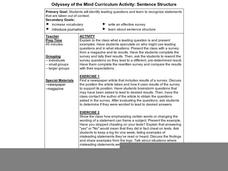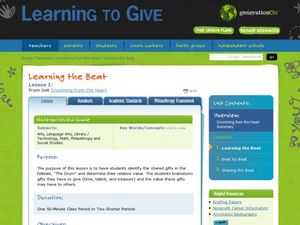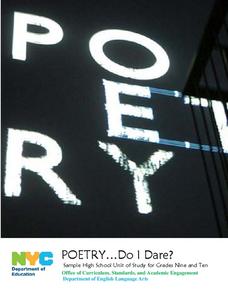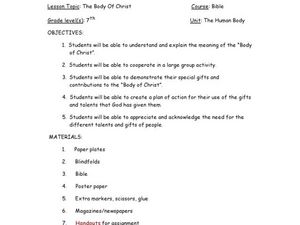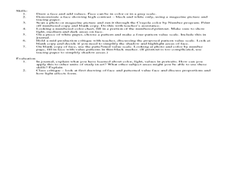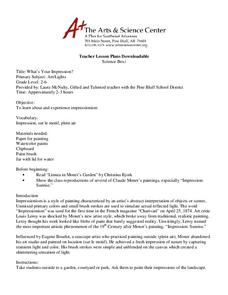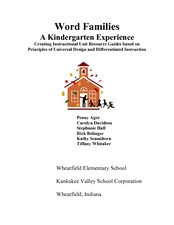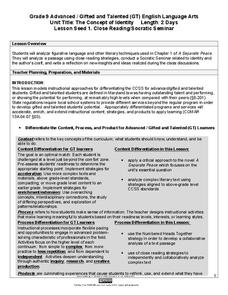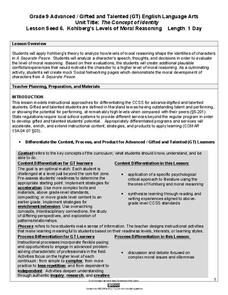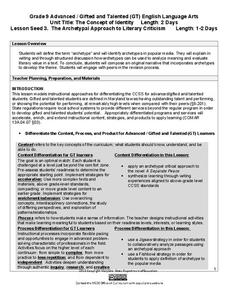Curated OER
The Art of Interpreting Percent
Ddefine the relationships between fractions, decimals, and percentages in a series of lessons. The class practices converting between these three versions of a number. They also find the common factor of a numerator and denominator and...
Odyssey of the Mind
Odyssey of the Mind Curriculum Activity: HEALTHY HUMOR
This lesson is hilarious! To understand how to investigate a topic, collect data, and evaluate the results, learners research the effects of laughter on health. Each group is assigned a research task, which they will turn into...
Odyssey of the Mind
Odyssey of the Mind Curriculum Activity: My Robot and Me
Robots and their interactions with their human counterparts are the catalyst for a fun writing lesson. First, the class brainstorms what they'd like to have their personal robot do or be capable of. Then, they each write a humorous story...
Odyssey of the Mind
Odyssey of the Mind Curriculum Activity: Sentence Structure
Statements can be taken out of context and interpreted or used to support a very different view than the one originally intended. Young journalists start thinking about leading questions, sentence structure, context, and how they all...
Curated OER
Learning the Beat
Students identify gifts found in folktales. In this folktale lesson, students read the Hindi folktale "The Drum" and discuss the value of gifts such as time, talent, treasure, etc. Students also create drum beats.
Curated OER
Our Unique Legacy of Giving
Students view The Gift of All, a Community of Givers. In this philanthropic lesson plan, students discuss the gifts of philanthropists they've seen. Students research and write a two page paper with four bullet points. Students include a...
Curated OER
Doo-Wop Pop
Doo-Wop Pop, by Roni Schotter is story that focuses on music and performing arts. Language arts activities include phonics, music, writing about dreams, poetry, and writing a letter are included in this literature guide. Furthermore...
Curated OER
First Day of GT
Students listen to and discuss a poem about a gifted student. They discuss what being gifted means to them and their families, and participate in a game that helps students to bond with each other.
Maryland Department of Education
The Concept of Diversity in World Literature Lesson 5: The Tragic Hero
Should identifying a tragic hero be based on a universal definition or a definition based on the morals and values of a specific culture? As part of a study of Things Fall Apart, class members read Sylvia Plath's "Colossus" and then...
New York City Department of Education
Poetry…Do I Dare?
Whether you're considering a poetry unit or just want to incorporate more poetry in your curriculum, this unit plan is a must-have. Packed with poems, teaching points, powerful prompts, and poetry performance suggestions, the resource is...
Granite School District
Vocabulary Cards 1st Grade A-L
Help young mathematicians acquire key vocabulary with this printable resource. Three different cards are provided for each word; one with only the word, one with the word and a picture, and one with the word, a picture, and a definition....
Granite School District
Vocabulary Cards 1st Grade M-Z
Clarify key math vocabulary terms with this series of printable cards. Three different versions of each term are provided; one with only the word, one with the word and a picture, and one with the word, a picture, and a definition. Note...
Curated OER
The Body of Christ
Seventh graders consider their own unique talents. In this church body lesson, 7th graders identify their personal contributions to the Body of Christ. Students create a collage and work with partners in a trust building exercise.
Curated OER
Pattern Value Portraits with Light
Students use the elements of art and principles of design to explore value. In this color value lesson, students use the portrait of a a face to help them understand color value, tints, shades and tones.
Curated OER
What's Your Impression?
Students paint landscapes. In this Impressionism lesson, students explore the history behind the Impressionist Movement in art and paint their own impressionist piece inspired by a nearby landscape.
Curated OER
Quick and Easy Tie-Dye
Students create their own tie-dye shirts. In this visual arts lesson, students take shirts and wrap a rubber band around a few small areas. They dot these areas with sharpies and then blend them together with rubbing alcohol.
Curated OER
Word Families: A Kindergarten Experience
Students study rhyming words. In this language arts lesson, students participate in several activities in which they practice rhyming words. Students match onsets and rhymes and practice spelling words.
Maryland Department of Education
The Concept of Identity Lesson 1: Close Reading/Socratic Seminar
John Knowles' A Separate Peace provides readers with an opportunity to develop their close reading and analytical skills as they look for what Knowles feels are the factors that shape our identity.
Maryland Department of Education
The Concept of Identity Lesson 2: The Historical/Biographical Approach
"How does our environment shape our identity?" After researching biographical information about John Knowles and considering how these experiences are reflected in A Separate Peace, class members consider the strengths and weaknesses of...
Maryland Department of Education
The Concept of Identity Lesson 5: Motivation - Maslow's Hierarchy of Needs
Maslow's Hierarchy of Needs provides the lens class members use to analyze and evaluate the motivations of the characters in Sylvia Plath's "Initiation" and scenes from Mean Girls. Readers then select a character from A Separate...
Maryland Department of Education
The Concept of Identity Lesson 6: Kohlberg's Levels of Moral Reasoning
How does our moral reasoning shape our identity? After a study of Kohlberg's Levels of Moral Reasoning, readers use Kohlberg's theories to analyze the speech, thoughts, and decisions of a character in A Separate Peace. They then create...
Maryland Department of Education
The Concept of Identity Lesson 7: Logical Fallacies
What are the effects of competition in an academic environment? The competition between the main characters in A Separate Peace motivates a series of activities that asks readers to take a stance on competition, and then to develop a...
Maryland Department of Education
The Concept of Identity Lesson 8: Propaganda in Visual Media
Visual and print propaganda are featured in a lesson that asks readers of A Separate Peace to examine the techniques used in propaganda from World War I, World War II, presidential elections, and in the novel.
Maryland Department of Education
The Concept of Identity Lesson 3: The Archetypal Approach to Literary Criticism
As class members continue their study of approaches to literary criticism, readers examine the symbolism and archetypal patterns in John Knowles' A Separate Peace, and how these parallels are used to develop a theme in the story.





